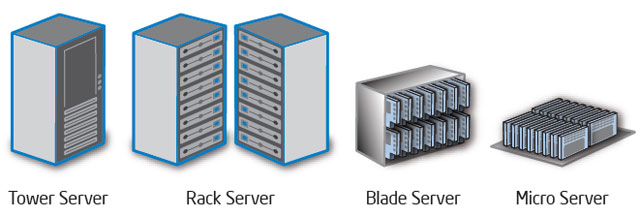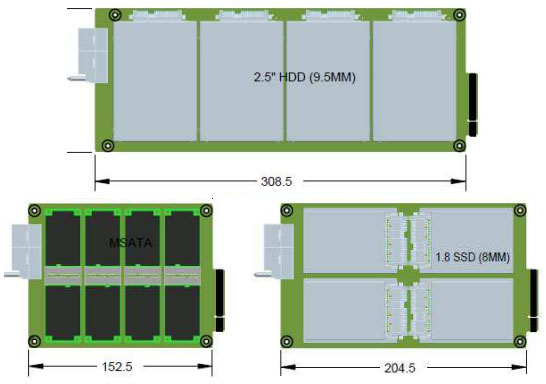Less and less and less ... Micro servers - a solution for macro tasks

Probably, everyone who regularly engaged in the calculation of hardware platforms for any tasks, faced with the fact that this calculation turned out to be wrong. In fact, in advance, especially in the early stages, it is definitely impossible to accurately determine the future load, not to mention the fact that even properly designed capacities sooner or later will still require modernization. Anyway, the "large-block" server arrangement, in addition to the obvious advantages, has one major drawback: its resources cannot be managed flexibly. That is why since it became technically feasible, the best minds have thought about the modular structure of hardware platforms. The last word in this area is micro servers.
There is no need to go far from the habr to find out: the concept of micro servers is far from new - that is confirmation . Does it make sense to go back to the printed? So yes, it has, the answer to the question "why" you will find below.
So what is a micro server? This is a miniature module that includes a processor, memory, disk space (optional), and, of course, the motherboard too. The modules can communicate with each other over a common bus, share the power and cooling system. The modules are loaded into the cabinet chassis both vertically on top (this will fit in more, but access to the basket is difficult) and horizontally in front, like blade servers. The chassis is also responsible for managing and monitoring modules. The SSI ( Server System Infrastructure ) specifications define several options for building micro server systems in terms of interaction architecture, control, installation density, and so on. For example, at the mercy of the chassis can only be given to the implementation of the interconnect bus, like what we see in the blades. Another option is a chassis with a base board that takes control of I / O and carries the shared disk storage of the modules, which allows them to be simplified (at the expense of a more expensive unifying construct).

Options for micro server architecture. From top to bottom: maximum node density, maximum memory, maximum disk storage
Micro servers represent the development of a modular idea, and not only in terms of saving space, as shown in the figure. Unlike their predecessors, they provide the opportunity to choose which modules and with which characteristics to fill the chassis. Consider the range of options for specific examples.
The most favorite example of adherents of modular architecture is hosting, regardless of whether it is a VPS / VDS or something smaller. The number of hoster clients will be taken to be the most marketer, and the needs of clients (by category) are known in advance. A new client appears - a new “brick” is put in the closet. It's all clear. However, such "building blocks" can be distinguished in the provision of virtually any information service. For example, network storage. Imagine a micro server consisting mainly of hard disks (of course, they should be the smaller, the better) and the processor, and better the system on a chip (SoC), which takes care of the organization of all related operations - just what you need . Further, if you need a powerful caching device, we take a micro server consisting only of RAM and the necessary disk space (SoC is also chosen strictly according to need). This list can be continued, but now, probably, everyone understands: the main advantage of micro servers is the ability to repeatedly build up the component of the system that is most in demand for its use.
')

Options for placing storage on micro servers
Now you can come back to the question of why micro-servers were started up again, why manufacturers such as Dell and others put these products in their lines, and Intel devoted a separate report to them at the recent IDF. In short, you can answer this way: the level of technology has finally grown to their effective practical application. Now we will decipher this thesis in more detail.
- Miniature. In addition to reducing the size of the "silicon component" (and it is also significant), the disk array has also undergone miniaturization. Hard disks of the mSATA format, of course, cannot be compared in size with disk shelves, but they perform their own storage function without sacrificing compactness. If necessary, you can dwell on more capacious options with 1.8 and 2.5 inches form factor disks.
- Energy efficiency. As we remember , with each new generation of Intel processors, their energy consumption decreases by about 20%. In addition to purely server platforms, mini servers with Atom processors with a symbolic consumption of about 15 watts per node are now available. Thus, we emphasize once again, the cost of operating a mini server is reduced not only due to technical progress, but also due to the “point” use of the existing resource. That is, "exactly as much as necessary and not a single megahertz surplus."
- Power. It seems that it is not required to describe in detail how over the past few generations computing power has increased in terms of a single Intel processor. Those tasks that previously required multiprocessor platforms are now feeling great on a single multi-core processor. But the processor in the cage of micro servers is not one.
- Parallelization Multi-threaded code execution technologies, which have become commonplace in various software applications, are hard to find a more comfortable working platform than a block of micro servers in which you can place just as many processors as you need.

Dell PowerEdge C5220 Micro Server
What characteristics have currently available mini server systems? We give their main parameters in relation to the 4U form factor.
| Application | CPU | Memory (on node) | 10G interface | HDD (on node) |
|---|---|---|---|---|
| Web server | 32 x Intel Xeon E3-LV or 64x Intel Atom | 16 GB | Joint at 16 nodes | 256 GB 2.5 ” |
| Caching | 32 x Intel Xeon E3-LV or 64x Intel Atom | 64 GB | Joint at 8 nodes | 256 GB 2.5 ” |
| Distributed file system | 24 x Intel Xeon E3-LV or 24 x Intel Atom | 32 GB | Joint for 2 nodes | 6 x 2 TB 2.5 ” |
Source: https://habr.com/ru/post/158579/
All Articles